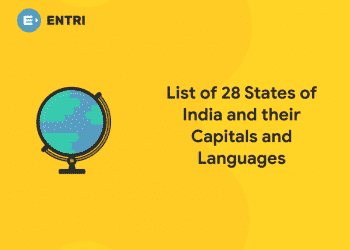Table of Contents
International days are marked to educate the public on issues of concern, to address global problems and to celebrate and reinforce the achievements of humanity. Each international day provides the community an opportunity to organize activities related to the theme and to create public awareness on the same. Organizations, governments, public and private sectors, schools, universities and citizens make the international day a springboard for awareness-raising actions. In this article let us check on the observation of International Labour Day 2024 and its theme, history, celebrations and Quiz.
International Labour Day 2024: May 1
In this article, readers can get a glimpse on
- History of International labour day
- Facts about labour day In India.
- The theme of International labour day 2024
- International labour day activities
- International labour day Quiz
History of International Labour Day 2024
On May 1st 1886 in United States of America people decided to go on a strike to demand the maximum duration of work to eight hours per day. This strike was followed by a bomb blast in Chicago’s Haymarket Square on May 4, 1886. This lead to the death of many and hundreds were injured as well. In order to commemorate the Haymarket square incident and to promote the welfare of labourers across the world, pan-national organization of socialist and communist parties chose this day as International Labour Day.
In 1889, a meeting in Paris was held by the first congress of the Second International, following a proposal by Raymond Lavigne that called for international demonstrations on the 1890 anniversary of the Chicago protests. International Labour Day was formally recognized as an annual event at the International’s second congress in 1891
Facts about Labour Day in India
- India celebrated first Labour Day in the year 1923 in the province of Madras (Chennai).
- Labour Day or May Day is also known as ‘Kamgar Din’ or ‘Antarrashtriya Shramik Diwas’ in Hindi, ‘Kamgar Divas’ in Marathi and ‘Uzhaipalar Naal’ in Tamil.
- The Labour Kisan Party of Hindustan was the first group that organized the May Day celebrations in India.
- Various schemes are set to support the labourer’s rights in India
- The Child and Adolescent Labour (Prohibition and Regulation) Act were set in 1986 to prohibit the employment of children below 14 years.
- Labour Day is a holiday for working sectors in India
Theme of International Labour Day 2024
“Ensuring safety and health at work in a changing climate”
The theme selected for Labor Day 2024 revolves around promoting and ensuring safety and health in the workplace amidst the challenges posed by a changing climate. With global warming and the resulting climate changes, workplaces have been increasingly affected by a range of environmental hazards, such as heat stress, air pollution, and extreme weather conditions. The theme highlights the importance of taking proactive measures to mitigate these hazards and safeguarding the well-being of workers. It aims to raise awareness among employers, employees, and policymakers about the need to create a safe and healthy work environment that is resilient to the impacts of climate change. The theme also underscores the role of technology, innovation, and best practices in building adaptive and sustainable workplaces that enhance productivity, protect human health, and reduce the environmental footprint.
- The following are the themes that were set earlier to mark this day across the world
- Labour Day 2022 Theme “A safe and healthy working environment as a fundamental principle and right at work”
- Labour Day 2020 Theme: “Maintaining Safety and Security at the Workplace”
- Labour Day 2019 Theme: “Uniting Workers for Social and Economic Advancement”
- Labour Day 2018 Theme: “Uniting Workers for Social and Economic Advancement”
- Labour Day 2017 Theme: “Celebrating the international labour movement”
- Labour Day 2016 Theme: “Celebrating the international labour movement”
- Labour Day 2015 Theme: “Construct the Future of Cameroon in Peace, Solidarity and Decent Work”
- Labour Day 2014 Theme: “Providing of the Job with helping of the Capital by giving value the work”
- Labour Day 2013 Theme: “Employment promotion by helping Entrepreneurs Perspectives”
International Labour Day Activities 2024
- Organizations can conduct a gathering to thank the selfless service provided by the staffs in the organization.
- Appreciate the diversity at work and conduct activities that will involve everyone at workplace irrespective of their role and designations.
- Encourage the young Entrepreneurs and provide them with support
- An appreciation message can be sent to the employees of the organization.
- Organizations should check for the working hours of the employees and make sure that it is not exceeding the maximum hours.
- Speeches can be delivered at the workplace and at school to make the community aware of labour rights.
- Child labour has to be stopped completely. Hence conduct a survey in your neighbourhood and also report the cases where you witness child labour.
- Poem writing competition can be conducted at schools to help the young minds think creatively and be aware of the contributions of labourers to society.
- Teach Children at school the value of every occupation around the world and let them respect everyone irrespective of their occupation.
International Labour day Quiz 2024
Entri wishes you all the best for upcoming examinations.













